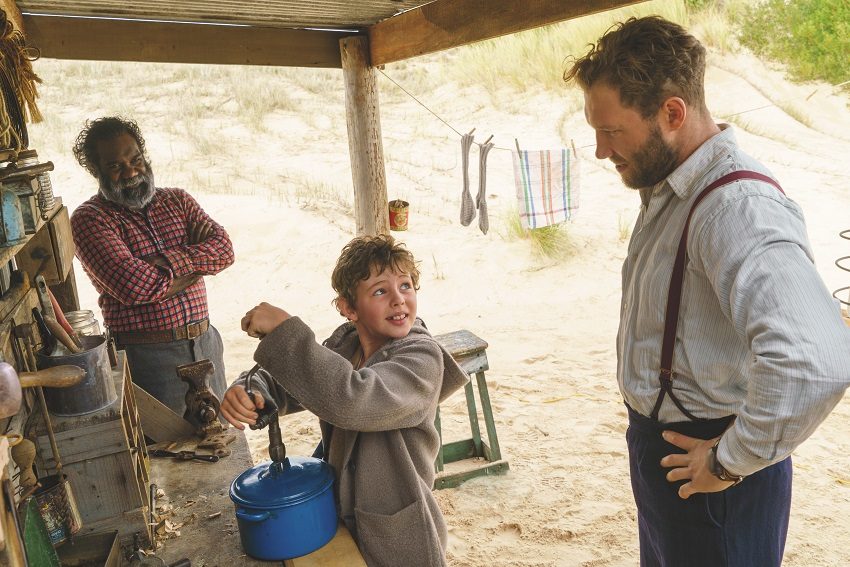Perfect Storm: Revisiting a South Australian classic

Since its release in 1976, Storm Boy has delighted generations of South Australians while introducing them to the wild landscape of the Coorong.
The coming of age story about a boy and his pelican was the third feature film produced by the South Australian Film Corp (SAFC) and was a hit both here and overseas. Based on the book by schoolteacher Colin Thiele, it’s a loving depiction of the unique environment where the Murray meets the sea and the need to protect this stunning part of the world from the excesses of human development. That’s a message that Ngarrindjeri elder Major Sumner, who won the Stevie Gadlabarti Goldsmith Memorial Award at the 2018 Ruby Awards, is more than happy to support.
The 70-year-old Sumner, also known as Uncle Moogy, remembers growing up at Long Point when the waters were so clear he could go spear fishing at night. Those days are long gone. As more and more water has been taken from the Murray for irrigation, flows have reduced to the point where the Coorong’s very existence is threatened.
A series of shallow lagoons mixing fresh and salt water, the Coorong stretches 130km from the mouth of the Murray River. For its entire length, the narrow Younghusband Peninsula protects the region from the ocean. In Thiele’s book it’s described as a “long, long snout of sandhill and scrub that curves away south-eastwards from the Murray Mouth. A wild strip it is, windswept and tussocky, with the flat shallow water of the South Australian Coorong on one side and the endless slam of the Southern Ocean on the other.”
A new chapter in the Storm Boy story is about to be written when a new adaptation from Sony Pictures reaches cinemas this month. While its release may be partly overshadowed by star Geoffrey Rush’s high profile defamation case (Rush plays an older version of the role originated by Greg Rowe), Sumner is hoping that it will once again focus the attention of a nation on this fragile region at the end of the Murray’s 3000km journey.
A cultural advisor on the film (described as a reimagining of the original story), Sumner worked with actor Trevor Jamieson, who plays Fingerbone Bill (iconically portrayed by David Gulpilil in the original), while counselling the filmmakers on portraying the environment in a sensitive way.

Though Sumner acknowledges that Thiele may have “come at it from a different angle” when celebrating this windswept region, by chance the South Australian author landed on the perfect companion for the titular character when he chose Mr Percival.
“The pelican to us is a very spiritual bird,” Sumner says. “We call them ngatji, which is a word that mean’s my best friend. The pelican is our best friend; it’s a spiritual connection to the spirit world, to the land… If I’m doing ceremonies like smoking ceremonies, I use the feather of the pelican to brush the smoke through the air.”
Gulpilil’s mesmerising performance in the original film remains one of his most memorable. His appearances in Storm Boy and the earlier Walkabout were among the first well-rounded roles for Indigenous actors. They also depicted a culture with deep connections to the land and it is perhaps no coincidence that both films were directed by Europeans rather than Australians.
Sumner is hoping that the new film can go much further. “What I’m trying to do today is get everyone who lives in this country to connect to this land, to the spirit of this land, to the spirit of the animals,” he says. “Because I know for a fact that you and everyone else is not going home again. You don’t even know where your home is – your home is here now, so this is a place that you have to connect with.”
The Ngarrindjeri have been connected to the Coorong for as long as it has existed. They were on this land during the last ice age, when the coastline was out towards the continental shelf and there was no Coorong. Their stories record the formation of the lagoons that define the area.
“We’re a part of the land, the animals, the stars, the trees, the fresh air, the water,” Sumner says. “We look after that and it looks after us. We’re a part of it, we don’t separate ourselves from anything.”
Storm Boy will be in cinemas from Saturday, January 17
Header Image:
Matt Nettheim / Sony Pictures